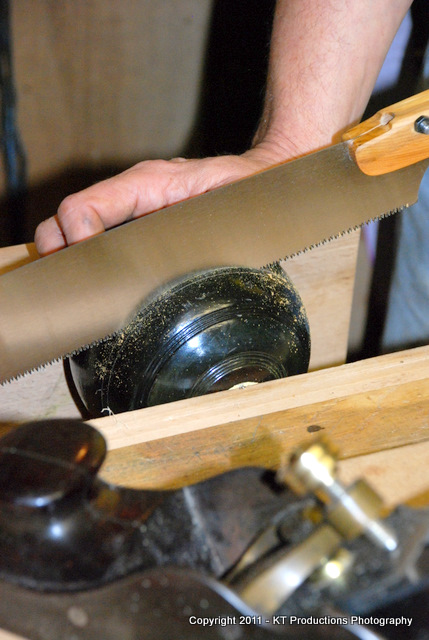Stanley Covington on another forum had a very expensive hand-made saw made for himself years ago and had it sent to me to try (a japanese saw). It was close to four figures, but made entirely by hand like a saw would've been made 100 years ago. It was a stout saw with a two handed grip 45 degrees to the tooth line, not a lightweight joinery saw.
I suggested that ripping hardwoods puts people using japanese saws at a disadvantage to western saws (that's neither here nor there in all of this), and he requested that the sawmaker make a saw that would be good for hardwoods.
Not surprisingly, it came out thicker and heavier than a softwood saw with teeth that were closer to western teeth than many of the very high hook maebiki teeth, etc. It was tempered dark brown, and probably made of something similar to W1 steel, so it was not as hard as many of the saws we're used to seeing come out of japan. There is no way I could have damaged it in use no matter what I cut with it and how hard I would've bore down on it - I gave it a go on a few pieces of stock and it wore me out without having to be tentative.
Long story short, some of the saws made in japan won't handle hardwoods, some will. Some of the ones that will still require a user to have patience and not bear down on them as you can do with a western saw when you get into a good work flow.
There is another side to this, and it's much like the planes. If you intend to use saws for joinery only, and perhaps the rare precise awkward cut or small crosscut, then it's not a problem to be patient with a saw. If you're going to try to use saws to do heavier work, inevitably, you won't want to finesse cuts forever, and that's where I got in trouble with my saws - using them to size stock and pushing them past their limits.
I'd be curious to find out if any other people have had the same experience. Usually, this topic comes up and someone points to one of Wilbur's quotes or something else similar, and it's deemed settled. But my saws still have broken teeth, and they were never kinked or stopped in a cut - they just broke off in various manners (some a tiny bit of the tooth broke off, and others, it broke close to the saw plate) and I didn't notice it until the feel of the cut got worse.




































